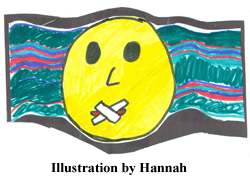
In my last 3 posts, I have talked about negative emotions and how to help a child manage them. Today, I want to write about a situation that can be very difficult to manage and that is a child who is SILENT. By silent, I mean one who does not express pain.
Let’s look at a few ways this can happen and why.
Loyalty
Some children keep their emotions bottled up inside of them out of loyalty to the adult in their life. I fell into that category as a child. The era in which I grew up, children were taught, “what goes on at home stays at home.” While I certainly don’t advocate hanging the family’s dirty laundry out for all to see, I look back now and realize that there were things I “wondered about,” but I wondered about them in silence, only to have to grieve through them in my adult life.
Divorce is another example that can cause a child to silence their feelings out of loyalty. Their thinking is: “I love both of my parents; I don’t want to talk “bad” about either of them.”
Temperament/Personality
I can’t say enough about the role temperament plays in how children and adults respond to life’s circumstances. A brief description of the Sanquine personality is: joyful, enthusiastic, creative, free-spirited, the life of the party. Yet inwardly, they are known to have suppressed anger; thus easily fitting into the category of the silent voice of pain.
Fear
A number of things can cause a child to be fearful and suffer in silence, but what immediately comes to my mind is sexual abuse where the predator has threatened his victim. Another example is a child who is being bullied may be threatened by the bully not to tell or “you will be sorry.”
Physical Display
While some children keep their pain bottled up internally, other children may be expressing their pain physically. The story of my friend’s granddaughter is a prime example. Her parents were getting a divorce. Her older brother realized that she began wearing long sleeves in the hot summertime and confronted her about it. She downplayed her actions by saying she was making a fashion statement of her own. Upon further investigation, her brother discovered that she was cutting herself with a razor blade all up and down her arms and was using the long sleeves to cover up the marks.
The Question is: How Can We Help the Silent Voice of Pain?
For the most part, children do not know what to do with their emotions. Therefore, as caring adults, we must make it a point every day to ask children questions about their life in general as a means of encouraging expression of feelings, less they become silent during a time of loss.
My daughter, Crystal, has come up with 2 ways to give her two children, ages 5 and 9, an opportunity to express themselves daily.
- She discovered that when she asked her kids, “how was your day at school,” she always got the same short answer: “Okay.” She wanted more information than “okay,” so she started giving them a word in which they had to describe their day to her using that word.
- Another thing she does comes at mealtime. She puts questions in a box and the kids draw one out. That question will be the topic of conversation for the whole family to discuss while eating their meal together.
Without even realizing it, these kids are learning that their feelings are important, and trust is being built with the main adult figure in their lives who they can talk with about issues that are of concern to them.
3. Another way to hopefully avoid the silent voice of pain is through artwork. Some children are not going to be as verbal as Crystal’s children, regardless of how much opportunity is given them to express themselves. However, most children like to draw. You’d be surprised at what you can pick up by a child’s drawings as to what he is thinking and feeling.
Oh, my dear friends, there are no cookie-cut answers as to how to help a child in grief. Everyone has their own unique experience.
But, my point in writing my book, Helping Hurting Children is to encourage us “lay people,” consisting of parents, grandparents, educators, children’s ministers, that WE CAN HELP. I am so thankful for Godly Christian counselors and by all means encourage it. There are, indeed, times children need more help that is beyond our capabilities.
But I have to believe that we “lay people” can cover a lot of territory in helping children because we are the people our children and grandchildren see every day of their lives.
Thanks for reading, and join Hannah and me next week, as we talk about Depression.
Recommended Books on Temperament
- Personality Plus for Parents by Florence Littauer
- The Temperament God Gave Your Kids by Art and Laraine Bennett









